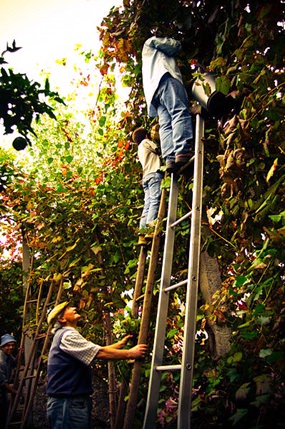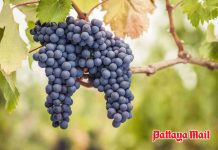Think of Portugal, think of Port. At least, that’s what people used to say decades ago when Portugal was known for little else. Except Madeira of course, that other fortified wine that graced many a British dining table of times long past. Sadly, outside their own country, Port and Madeira have rather fallen out of fashion these days, especially with the younger generation.
This really is a shame, because both these wines have so much to offer. On a recent hunting and foraging expedition in town, I could find only one rather ordinary bottle of Port and not a single bottle of Madeira. Portugal has another claim to fame: that sweet and fizzy Mateus Rosé that became hugely popular in the 1970’s. It appeared in characteristic flask-like bottles, many of which ended up as table lamps. And you might not know that another of Portugal’s contributions was producing corks for wine bottles. Not so long ago, before synthetic corks and screw closures became popular, Portugal dominated the world’s cork production.
 Harvesting grapes for Vinho Verde (Photo: Feliciano Guimarães)
Harvesting grapes for Vinho Verde (Photo: Feliciano Guimarães)
Today, Portugal has a great deal of interesting wine to offer especially some of the reds from the Douro Valley. They’ve been making table wines there since ancient times and the country has its own cast of grape varieties too, exotically named things that might raise an eyebrow if you haven’t heard of them before. They include grapes like the Alfrocheiro Preto, the Bastardo, the Castelão Frances, the Encruzado, the Fernão Pires, the Mourisco and the Esgana Cão, but there are dozens more. The last one by the way, means “Dog Strangler” which possibly refers to the fiercely astringent wine that it produces.
Both these Casal Mendes wines are at the opposite end of the spectrum from Port and Madeira and they come in traditional, tapered liqueur-style bottles. This popular brand is produced by Aliança, a distinguished Portuguese company founded in 1927. Aliança currently exports to over sixty countries and specialises in both table wines and high quality brandies.
Casal Mendes Vinho Verde (white), Portugal (Bt. 600 @ Wine Connection)
Even if your Portuguese is not so hot, you’ve probably guessed that Vinho Verde translates literally as “green wine”. The name refers not so much to the wine’s colour, but to its fresh and fruity youthfulness. It does actually have a pronounced greenish tinge, but so do most very young wines. There is also a red Vinho Verde but it’s not exported, which is probably just as well because few people outside Portugal would be enchanted with its sour, unwelcoming taste. Some of these reds can be so acidic that you feel that your teeth are about to self-extract.
Vinho Verde (VEE-nyoh VEHR-deh) comes from the Minho in the North-West of Portugal – a land of fertile rolling hills up near the Spanish border and one of the most agriculturally productive areas in the country. Vinho Verde is normally a fairly basic, low alcohol wine and intended to be consumed as soon as possible after production which is perhaps one reason that many producers don’t put a vintage year on the label. In a Portuguese household, an old Vinho Verde would not be a particularly welcome guest. Many growers train their vines high off the ground up trees, fences, and even on telephone poles. This prevents the grapes from becoming too hot and also creates space to cultivate other crops below the vines but ladders are needed to harvest the grapes.
Vinho Verde can be made from any of a couple of dozen local grape varieties. This one, from Casal Mendes is made from a blend of the yellow, high-yielding Azal grapes and the less well-known Pedernã variety. It has an attractive, fresh yeasty aroma which wafts out of the bottle as soon as you open it. There are also hints of citrus, pomelo, herbs and white flowers. Although it’s not technically a sparkling wine, there’s plenty of characteristic youthful fizz, produced by a crafty dose of carbon dioxide added just before bottling.
The wine is quite sharp on the palate and you’ll get a whoosh of fresh acidity too. It’s light and citrusy and there’s a surprisingly long fruity finish. At only 10% alcohol content, it would make a terrific apéritif – plenty of acidity to kick the taste buds into action and low enough in alcohol to have a couple of glasses before the butler arrives with the soup.
Casal Mendes Rosé (pink), Portugal (Bt. 600 @ Wine Connection)
If you’re looking for a light-hearted summer wine, this is a real winner. It’s made from a Portuguese dark-skinned grape variety known as the Baga, which incidentally is also used to make Mateus Rosé. It’s hardly known outside the country but even so, in Portugal it has twenty-four different names including Bairrado Tinta, Baya, Carrasquenho, Carrega Burros and Goncalveira.
The wine is a vibrant light pink-orange and has a refreshing fruity aroma of strawberries and raspberries, with a faint aroma of herbs, bananas and pineapple in the background. It’s only slightly dry and very light-bodied, with delicate fruit on the taste and just the faintest hint of sweetness. “Off-dry” would perhaps be the best description. There’s a good dash of refreshing acidity too, giving it a zesty lively mouth-feel.
This wine has a lively spritzy quality and there’s an attractive peppery finish with a dash of strawberry. Casa Mendes is the third largest rosé brand in Portugal and it’s a superbly made wine yet at only 10% alcohol, a delightful easy-drinker. The thing is, you really need to serve this very cold indeed – straight out of the fridge would be fine. Even then, I’d be tempted to stick it in the freezer for ten minutes down among the fish fingers and chicken nuggets just to perk it up. Served really cold, it would make an exciting and interesting apéritif, but it would also pair well with many Thai and Chinese dishes too.
The well-known wine-writer Oz Clarke recently wrote in Portugal Food & Travel Magazine, “What a rosé! Strawberry and pepper, with a good hint of spritziness this is a perfect accompaniment to a hot summer’s day. It has a cleansing finish with a final zip of that strawberry fruit.” And incidentally, the recent tax hikes have added another Bt. 200 to what this wine coast last year. Honestly, it’s enough to turn you to drink.




